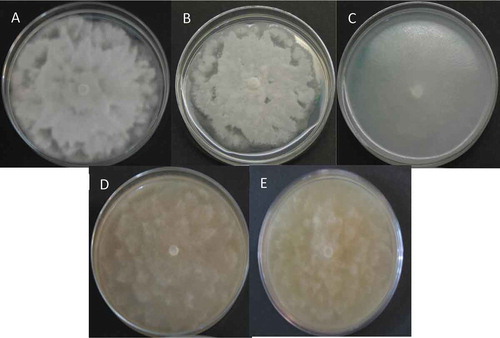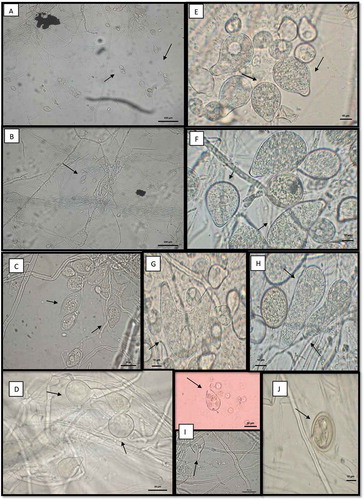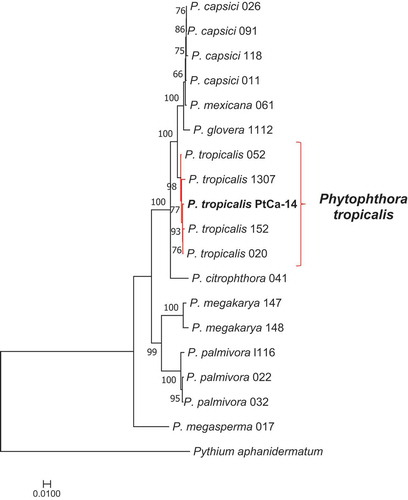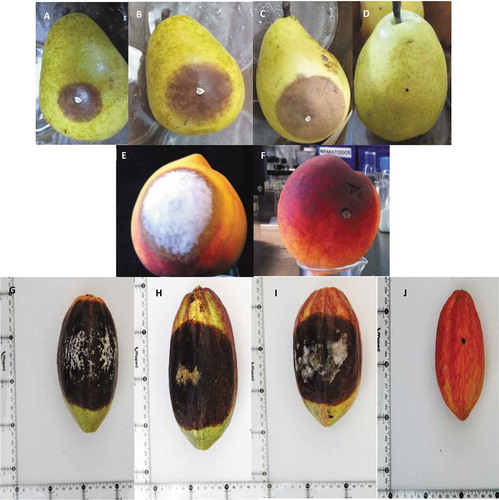Figures & data
Fig. 1 (Colour online) Isolation of Phytophthora tropicalis from cacao pods. (a) Cacao pod with black rot; (b) internal damage in the cacao pod; (c) cacao pod endodermis infection; and (d) Phytophtora sp. isolate recovered from infected tissue, grown in PDA at 28°C for 5 d

Table 1. Morphological features of Phytophthora tropicalis, Phytophthora palmivora and Phytophthora capsici.
Fig. 2 (Colour online) Colony morphology of Phytophthora tropicalis PtCa-14 in different media. (a) PDA; (b) SDA; (c) corn flour; (d) chocolate; and (e) V8. Stellate to petallate colony pattern after the phytopathogen was grown for 5 d at 28°C. No sexual structures were observed

Fig. 3 (Colour online) Phytophthora tropicalis PtCa-14 observed by transmission electronic microscopy. (a) Sporangia showing sympodial with long pedicel and umbellate sporangiophores; (b) attachment of sporangiosphores is in close and simple sympodial arrangement; (c) sporangium typically papillate, ellipsoid; (d) chlamidosporas with base bulbous. Polymorphism sporangia; (e) sporangia limoniforme; (f) ellipsoid sporangia; (g) bi-papillate/tulbinate; (h) elongate; (i) release of zoospores with water; and (j) chlamydospore. Magnification: a, b, 20X; c, d, g, 40X; e, f, h, i, j, 100X

Fig. 4 (Colour online) Phylogenetic analysis of Phytophthora species, comparing the concatenated molecular markers ITS/coxII/TEF-1a/beta tubulin with maximum likelihood using the model GTR+I+G. The bar represents the differences among the sequences. The sequences were gathered from the Phytophthora database (http://www.phytophthoradb.org/)

Fig. 5 (Colour online) Pathogenicity assays of Phytophthora tropicalis PtCa-14 using pear fruits and cacao pods. (a-c) pear fruits, 5 d after inoculation with strain PtCa-14; (d) uninoculated pear fruit; (e) peach fruit, 3 d after inoculation with train PtCa-14; (f) uninoculated peach fruit; (g-i) cacao pods, 7 d after inoculation with strain PtCa-14; (h) uninoculated cacao pod

